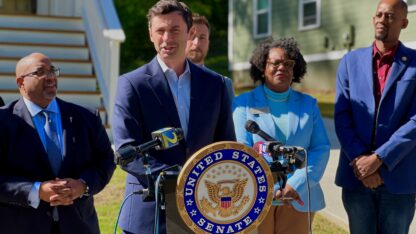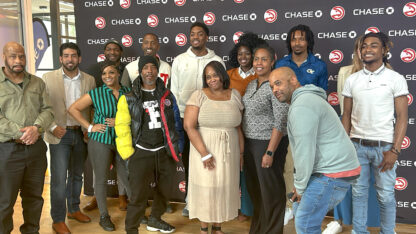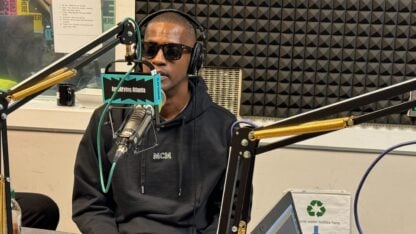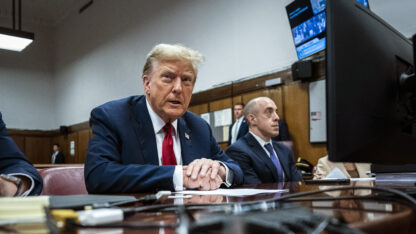Atlanta Has Become A Hub For Fixing Broken Hearts – With The Help Of A Surgical Robot
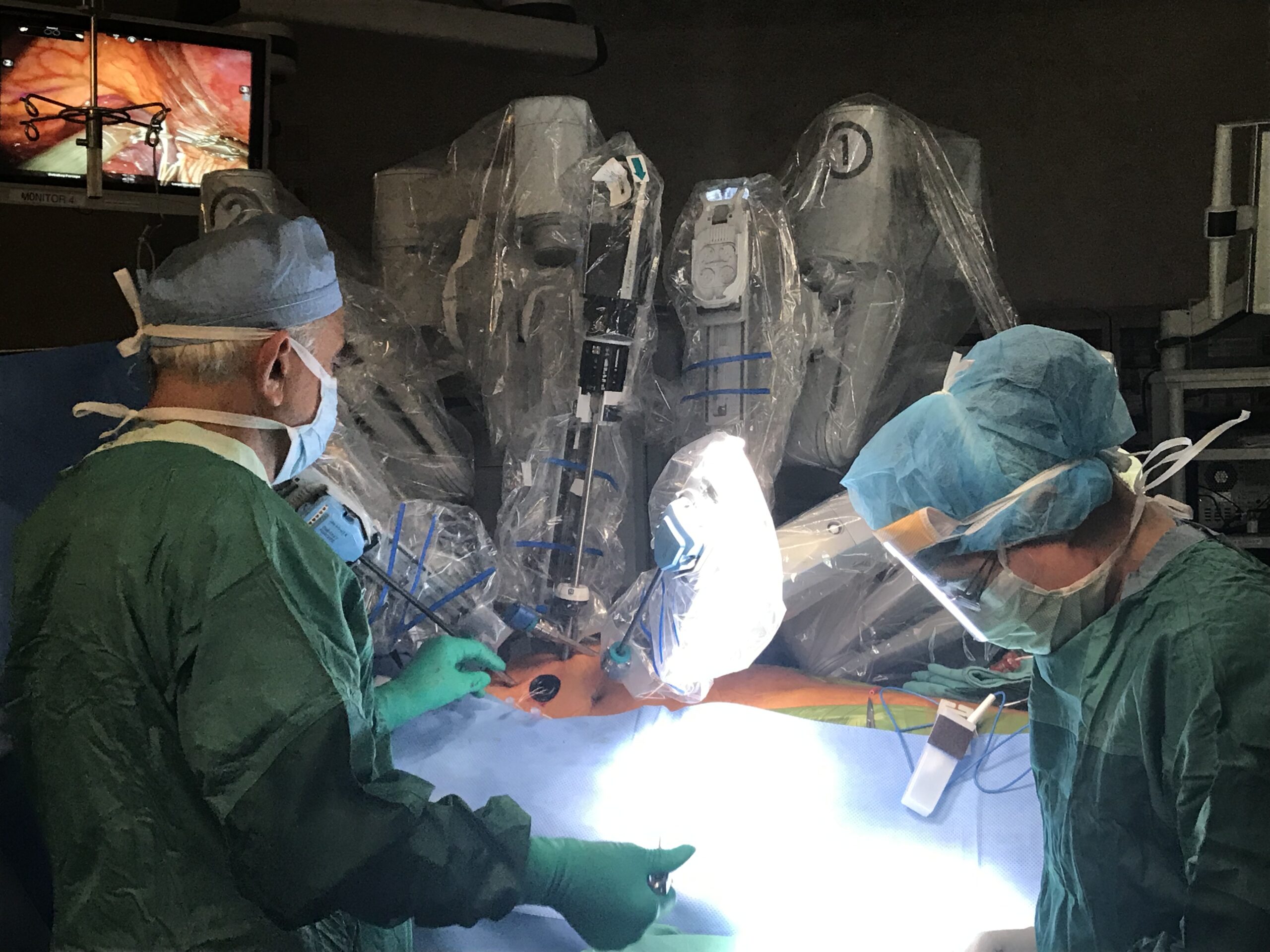
Emory Saint Joseph’s is one of the few centers in the country to offer minimally invasive robotic heart surgery, mainly valve repairs. The Da Vinci system is the only surgical robot currently approved by the FDA.
Courtesy of Emory Saint Joseph's
It’s a big day for Scott Nelson. At 7 a.m., he’s in pre-op at Emory Saint Joseph’s hospital. He’s getting heart surgery.
That’s normally a nerve wrecking thought, the idea of surgeons opening the chest, dividing the breastbone, maybe cracking a few ribs on the way – and cutting into the engine of life.
But Scott Nelson isn’t nervous.
“The operation is the easiest part of it,” he says. “The hardest part was when I was really sick, and I didn’t know what was going to happen.”
Last year, the 37-year old landscape gardener from Hawaii fell ill with endocarditis, a dangerous infection of the heart valve. The infection eventually healed but left Nelson’s mitral valve – one of the four valves of the heart – severely damaged. Nelson needed surgery and decided to travel over 4,000 miles to Atlanta to get it.
Emory Saint Joseph’s is one of the few centers in the country to offer minimally invasive robotic heart surgery, mainly valve repairs. Most hospitals in the U.S. still do open-chest surgery.
World Record Holder in Robotic Heart Surgery
Nationally, about 12 percent of all mitral valve repairs are done robotically, according to the Society of Thoracic Surgeons. At Emory Saint Joseph’s, the rate is 97 percent.
“For me as a surgeon, the advantage of the robot is that I can make more precise stitches and maneuvers,” Dr. Douglas Murphy, the chief of cardiothoracic surgery at Emory Saint Joseph’s, said.
Murphy is tall and wiry, with an air of calm and casual confidence. He’s done over 3,000 robotic heart surgeries, more than any other cardiac surgeon in the world. That’s why Nelson isn’t worried.
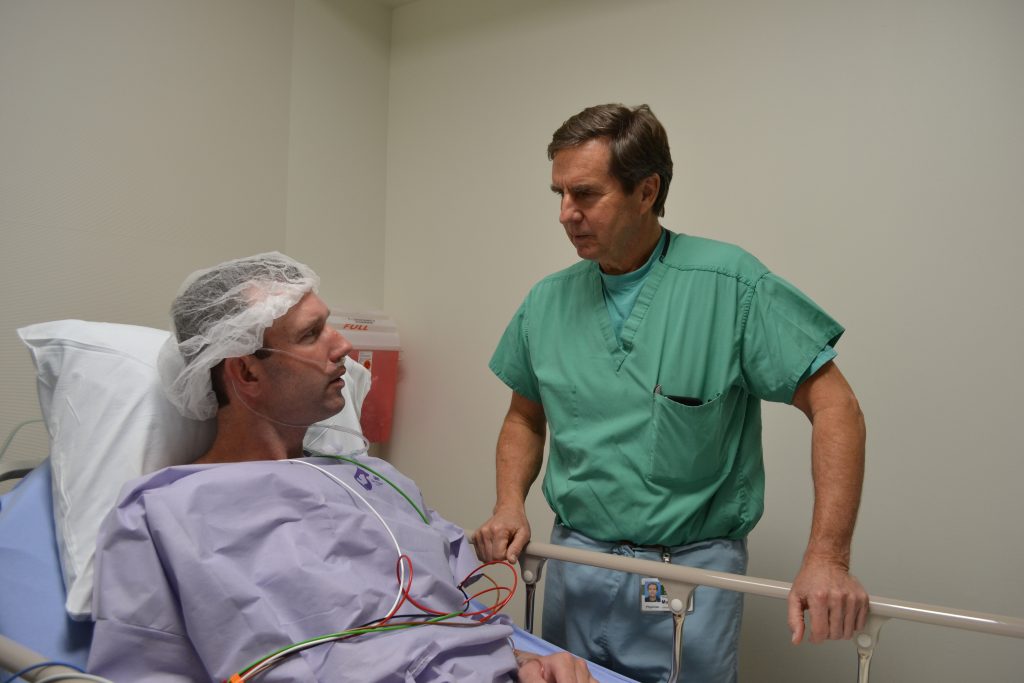
Murphy leans at Nelson’s bedside and explains how he plans to do the operation.
“We’re going to make every effort to repair your valve,” says Murphy. For a young man like Nelson, a valve repair is advantageous over a replacement. Mechanical valves not only require the patient to take a daily dose of blood thinners for the rest of their lives. They also increase the risk of stroke.
“For a complex repair like this, chances are better with a robot,” says Murphy, who has operated on more than 8,500 hearts in his career. He did many pioneering surgeries, including the first heart transplant in Atlanta in 1987.
At 8:30 a.m., Nelson is wheeled into the OR. The anesthesiologist starts the IV.
The Da Vinci system, which is the only surgical robot currently approved by the FDA, has two elements. One is a cart with four arms. They hold a tiny camera and surgical instruments, like scalpels and scissors.
The other element is a console, about 10 feet away from the operating table. From there, the surgeon steers the robotic arms with two handles and foot pedals.
Five Small Incisions and a 3D View
The robotic surgery begins by hand. Murphy makes five small incisions on the right side of Nelson’s chest.
“One for the camera, three for the robotic arms, and then we have a fifth hole where the patient side assistant can participate in the operation and pass us materials,” Murphy explains.
The robot is now hovering over the patient. Murphy steps back from the operating table and sits down at the console.
One of the critical moments in any cardiac surgery is when the heart-lung machine takes over pumping blood through the patient’s body.
The perfusionist, the technician operating the heart-lung machine, calls out some key data – blood volume, temperature, oxygen saturation.
Everyone in the OR is waiting for Scott Nelson’s heart to stop beating, so that Murphy can operate on a resting heart. At 10:10 am, the heart monitor shows a flatline.
Murphy, with tiny twists and turns from his wrists, brings the robot to life.
“I think the term robot is kind of a misnomer,” Murphy later reflects. “That’s because of what is implied in science fiction movies, and because of what happens in manufacturing, where robots are programmed to do the work by themselves.”
But the Da Vinci is not programmed to be smart. It’s trained to follow orders, and the surgeon is in control.
“It’s an extension of our hands,” Murphy further explains. “We move our hands, the computer reads the movement of our hands and then moves the robotic instruments inside.”
He adds that robotic surgery “should really be called tele-manipulation.”
Murphy, with the help of the robot, cuts out a small piece of tissue from the heart sac and starts patching the damaged valve, stitch by stitch.
He can see the operating area in 3D, and it’s magnified 10 times. Also, the robot is able to work angles that a human cannot. In addition, it has built-in software that eliminates the slightest tremor of the surgeon’s hands.
While Murphy closes the heart sac, he signals for the perfusionist to restore the blood flow. Scott Nelson’s heart picks up a beat, briefly goes into a chaotic rhythm, and then recovers. It’s 12:05.
Nelson’s heart rested for 115 minutes. That’s twice as long as for an average robotic mitral valve repair, explains Murphy, because the valve was heavily damaged.
Big Investment, Long Learning Curve
Later in the afternoon and still in his light blue scrubs, Murphy sits in his small office overlooking the grey hospital complex.
He says he understands why some hospital administrators are skeptical of the robot. The machine is expensive, about two million dollars. And it’s not easy to use.
“To learn how to work the robot, surgeons have to stop and study and put a huge amount of time into it,” he says. “There’s a negative financial incentive, and a negative productivity incentive for surgeons to pursue it.”
But Emory Saint Joseph’s considers the robot an investment in the future.
For patients, says Murphy, robotic surgery reduces surgical trauma by leaving the breastbone and ribs intact. This means faster recovery and often, better outcomes.
That’s certainly true for Scott Nelson. Two days after the operation, he sits in his hospital bed and watches a basketball game on TV.
Right after the surgery he asked a nurse to hand him a stethoscope. He wanted to listen to his freshly fixed heart.
“Before, it was making a squish noise, BUMP SQUISH, BUMP SQISH,”, he remembers. “And then I listened to it right when I woke up and it was like, BOOM-BOOM, BOOM-BOOM, totally normal.”
Nelson only had a little soreness from the small incisions in his chest that let the robot help repair his broken heart.




